September 4, 2015
Air Date: September 4, 2015
FULL SHOW
SEGMENTS
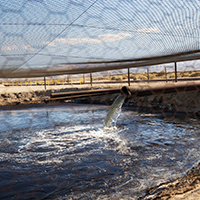
EPA Fails To Properly Regulate Fracking Waste
View the page for this story
Over 27 years ago, the EPA pledged to update its regulation of toxic waste from oil and gas drilling, including fracking, but it has yet to issue new rules. Seven environmental groups have now filed a 60-day notice of intent to sue the EPA for failing to keep its promise. Lead attorney Adam Kron from the Environmental Integrity Project discusses the toxic and radioactive contents of fracking waste and proper disposal methods with host Steve Curwood. (08:05)
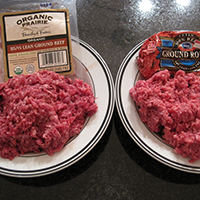
The Beef With Ground Beef
View the page for this story
Americans love hamburgers, but a new report in Consumer Reports suggests that not all ground beef is equally safe. The Magazine’s Director of Consumer Safety and Sustainability, Urvashi Rangan, spoke with host Steve Curwood about her group’s investigation into dangerous bacteria in ground beef products and explains why sustainably-sourced meat may be healthier for consumers and better for the environment. (06:50)
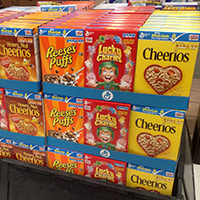
Cheerios Go Green
View the page for this story
Extreme weather events and drought threaten the world’s food supply, and the profitability of large food companies. Some multinationals such as Unilever and Walmart are adopting practices to fight global warming, and General Mills is now aggressively requiring more climate-friendly ingredients from its suppliers. General Mills’ Vice President and Chief Sustainability Officer Jerry Lynch tells host Steve Curwood about the company's plan to drastically cut its global warming gas emissions along its entire value chain from farm to fork to disposal. (06:45)
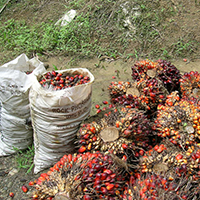
Rethinking Our Relationship to Palm Oil
/ Shannon KelleherView the page for this story
Palm oil production has long contributed to climate change by fostering rainforest and peatland clearance in Southeast Asia. But new solutions to the problems are on the rise. Living on Earth’s Shannon Kelleher investigates alternative oils that might come to share palm oil’s market niche and how processors are being encouraged to use more sustainable sources of palm oil. (07:25)

"Tropical" Diseases Reappearing in the U.S.
View the page for this story
Tropical diseases such as Chagas disease, dengue fever, usually found in South America, Africa and Asia, are increasingly affecting people in the US, with debilitating and even deadly consequences. Journalist Carrie Arnold tells Host Steve Curwood how complacency and a lack of research have allowed these diseases to spread in the U.S., especially among poor people in The South. (08:35)
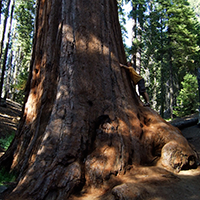
Beyond the Headlines
/ Peter DykstraView the page for this story
In this week’s trip beyond the headlines, Peter Dykstra tells host Steve Curwood about fossil-fueled FOIA requests, the perfect website to show a climate denier, and the history of the term “treehugger”. (04:15)
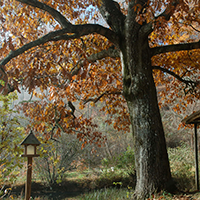
The Place Where You Live: Cowee, North Carolina
/ Angela-Faye MartinView the page for this story
Living on Earth is giving a voice to Orion magazine’s longtime feature in which people write about the place they call home. In this week’s edition, songwriter Angela-Faye Martin uses her words and music to picture her North Carolina valley on the edge of the Great Smoky Mountains. (05:10)
Show Credits and Funders
Show Transcript
HOST: Steve Curwood
GUESTS: Adam Kron, Urvashi Rangan, Jerry Lynch, Angela-Faye Martin, Carrie Arnold
REPORTERS: Shannon Kelleher, Peter Dykstra
[THEME]
CURWOOD: From Public Radio International, this is Living on Earth.
[THEME]
CURWOOD: I'm Steve Curwood. The US government is under fire for its failure to protect the public and the environment from toxic waste from oil and gas fracking wells.
KRON: EPA looked at this back in 1988, and it said that the generic rules that govern oil and gas waste do not fully address oil and gas waste concerns. We're here 27 years later and we're asking EPA to do what it saw fit to do back then.
CURWOOD: Also, getting companies to clean and green up the ingredients in their products.
BOUCHER: Very often when we hear something bad about a particular product, in this case palm oil, the initial thinking is, “Well I’ll just stop buying that entirely”. And I understand that impulse, but in fact, making companies produce that sustainably is actually better than simply giving up on it.
CURWOOD: We’ll have those stories and more this week, on Living on Earth. Stick around.
[NEWSBREAK MUSIC: Boards Of Canada “Zoetrope” from “In A Beautiful Place Out In The Country” (Warp Records 2000)]
ANNOUNCER: Support for Living on Earth comes from United Technologies – innovating to make the world a better, more sustainable place to live.
[THEME RETURN]
EPA Fails To Properly Regulate Fracking Waste
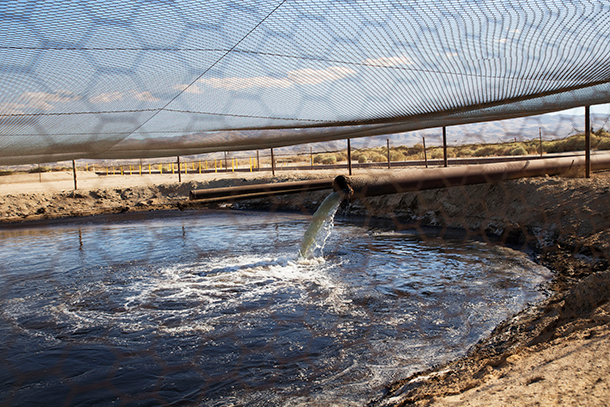
Wastewater from hydraulic fracturing—often contains heavy metals, organic pollutants, and dissolved radioactive materials—is routinely pumped into unlined holding ponds. (Photo: Sarah Craig/Faces of Fracking, Flickr CC BY-NC-ND 2.0)
CURWOOD: From the Jennifer and Ted Stanley Studios at the University of Massachusetts Boston and PRI, this is Living on Earth. I’m Steve Curwood. Oklahoma, Ohio and Texas are now earthquake zones, thanks to tremors that are being blamed on wastewater injections from hydraulic fracturing operations for oil and gas. But it’s been 27 years since the US Environmental Protection Agency updated its rules for wastes from oil and gas drilling. With the recent fracking boom there are not only many more injection wells but toxic wastewater is also winding up in leaky ponds and landfills, and is even being sprayed onto roads and fields. Now, a coalition of seven groups, including the Environmental Integrity Project and the NRDC has filed a notice of intent to sue the EPA over its failure to regulate. Adam Kron of the Environmental Integrity Project is the lead attorney in the lawsuit. Adam, welcome to Living on Earth.
KRON: Yeah, thanks for having me.
CURWOOD: So tell me why are the Environmental Integrity Project, the Natural Resources Defense Council and others taking this legal action to push EPA to regulate waste disposal from oil and gas drilling?
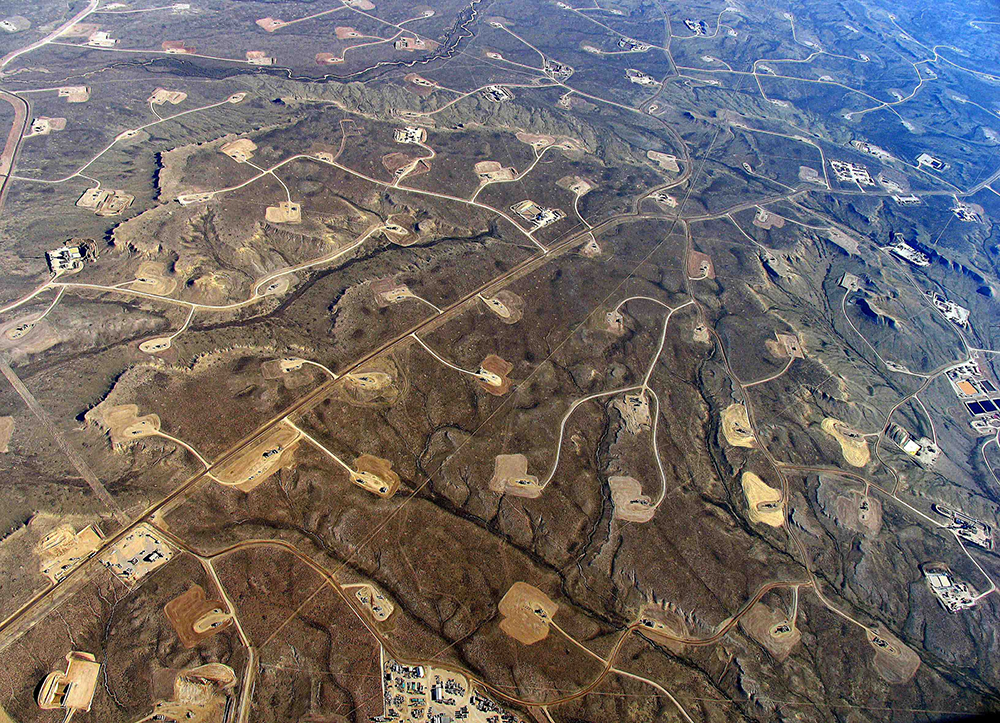
Environmental groups are concerned that the EPA’s waste disposal rules, which were last updated in 1988, do not properly regulate fracking waste disposal. (Photo: Simon Fraser University, Flickr CC BY 2.0)
KRON: Sure, so we have basically a booming oil and gas industry, and that's driven by hydraulic fracturing and the development of shale resources and these have resulted in a vastly increasing amount of wastes, both in terms of wastewater, millions of gallons per well; in terms of drill cuttings, hundreds of tons per well; and all these wastes have to go somewhere for disposal. So the problem is that these disposal practices and the needed controls haven't kept pace with this increasing waste stream. So what we're asking EPA to do is to update its waste disposal rules under the Resource Conservation Recovery Act specifically to address these oil and gas wastes.
CURWOOD: What's this waste composed of and how safe is it for the public to be near it?
KRON: So there are basically two main components of this waste. There's the wastewater, and that's all the water that's being used for hydraulic fracturing and to some extent drilling. And then you've got the more solid wastes, which are drill cuttings, drilling muds, and frac sands. The wastewater has high-level salts, it's got certain radioactive materials from underground, it's got every type of hydraulic fracturing chemical that's added to water when it's first injected into the wells and then you've got the drill cuttings which have high levels of metals. We're talking barium, mercury, lead, high levels of radioactive components from the formations underground and just a variety of organic components such as benzene and toluene and whatnot. So there are a variety of different levels of these components depending what type of waste and where it goes, but what we've known is that the public should not be in direct contact with these wastes.
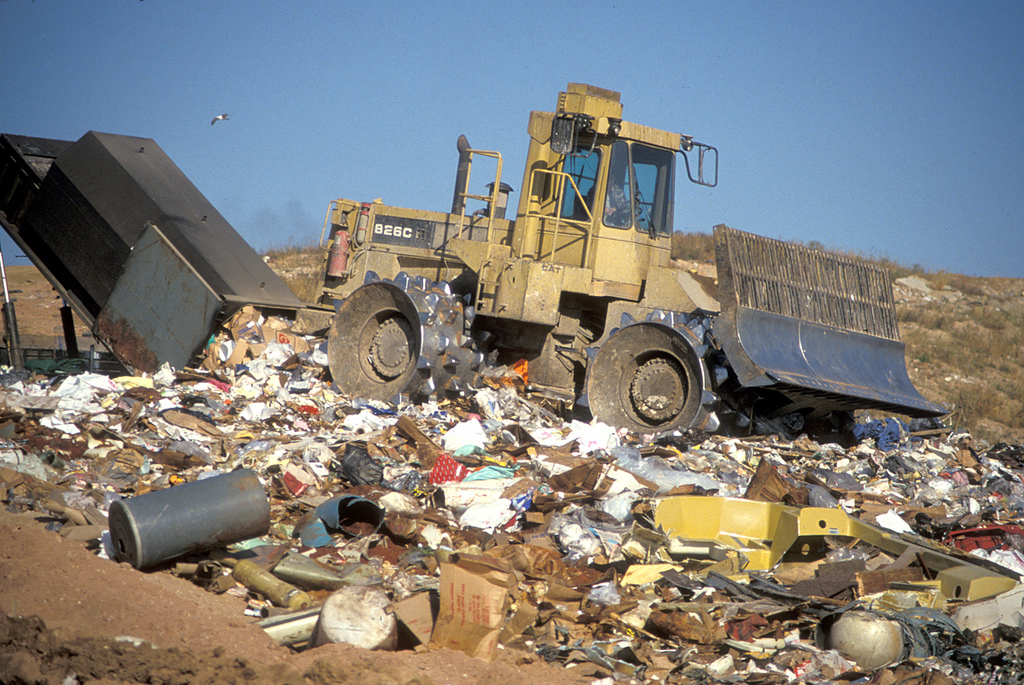
Solid waste from fracking is currently disposed of in landfills and open-air pits. Environmental groups are concerned about possible leakage of toxins from the waste into groundwater. (Photo: Wisconsin Department of Natural Resources, Flickr CC BY-ND 2.0)
CURWOOD: So, briefly what are some of the concerns you have about what's been happening to the waste?
KRON: There are a variety of different practices that the industry uses to dispose of these wastes, and so these are underground injection wells, which we've recently seen proliferating across the nation. These are open-air ponds and pits where industry stores and to some extent disposes of its wastes, spreading wastewater on roads and fields, and also just sending more solid wastes to your typical landfills. Just, county landfills can accept this waste.
CURWOOD: So you want to see this stuff better regulated. Why has the EPA not updated the rules for this kind of oil and gas extraction as it's, well, supposed to?
KRON: That's a very good question. EPA looked at this years ago back in 1988, and even back then it said that the generic rules that govern oil and gas waste, these do not fully address gas waste concerns. So it proposed to tailor the rules to address the specific chemicals and components and waste disposal practices of the oil and gas wastes. In particular, it said that we need to be able to deal with these large-volume wastes like wastewater and drill cuttings. For whatever reason, EPA never make good on that promise, so we're here 27 years later and were asking EPA to do what it saw fit to do back than, well before the fracking boom, well before we got these vast quantities of waste.
CURWOOD: By the way, Adam, what have various states done to regulate this fracking waste with this vacuum of updated federal regulation?
KRON: So the states have done a variety of different things. Some states have done a pretty noble job of it. Some have handled it in less of a protective way. So, for example, one state that has been in the news a lot is New York. It recently been banned high-volume hydraulic fracturing which by and large was a result of a study of looking into the issue very specifically and considering the fact that New York draws so much of its water from the area in which this oil and gas fill-in would take place. The sort of irony of this is that even though New York has banned high-volume hydraulic fracturing, it still allows the industry to come to New York in the form of waste disposal. So you've still got spreading of oil and gas wastewater on New York's roads. You've still got drill cuttings going to New York's landfills. So even what many consider to be the best state for the regulation of oil and gas industry still has this blind spot when it comes to the actual regulation of the waste itself.
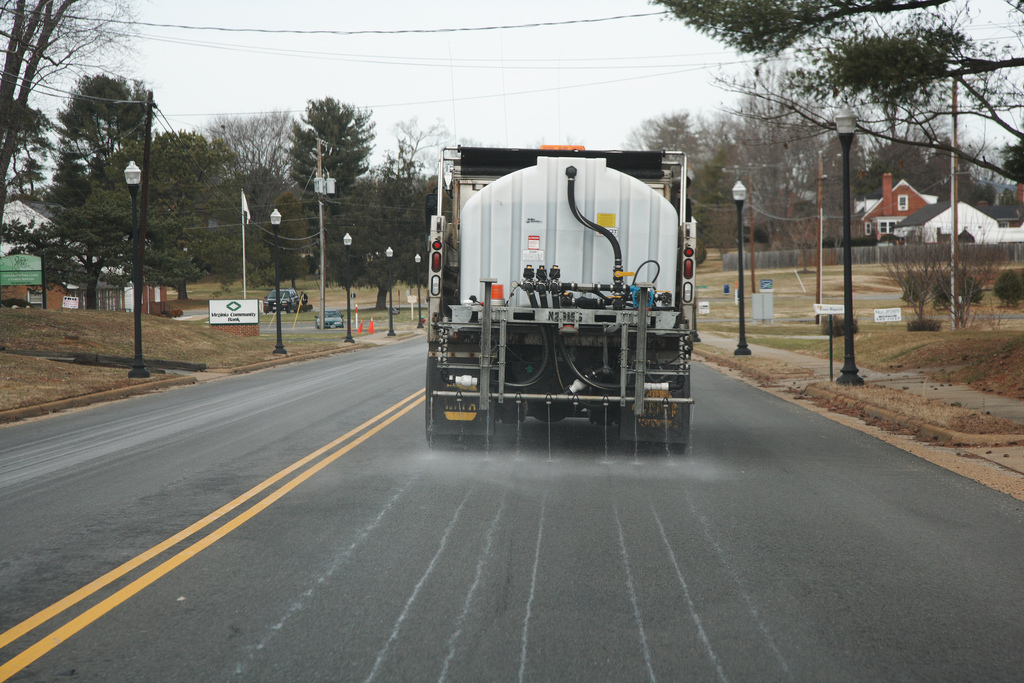
“Frackwater” contains high levels of salt, because of this, some municipalities spread it on roads as a de-icer in the winter. (Photo: Al Covey/Virginia Department of Transportation, Flickr CC BY-NC-ND 2.0)
CURWOOD: So if you and your partners were in charge of regulating fracking wastewater, what would the rules say?
KRON: I think, for one, the underground injection wells, they need across-the-board very specific regulations to address this rising concern with earthquakes, what they call ‘induced seismicity’. States that have never had earthquakes before in recorded history like Ohio are seeing hundreds of them. We need to address this in a certain way, whether that means reducing the number of deep wells, whether that means reducing the volume of injected wastewater, something needs to be done. Second we need to look at these open-air ponds and pits that accept wastewater and some certain solid wastes from industry. These are notorious for leaking, for spilling, and just getting into groundwater, and getting into surrounding creeks. Some states have taken the measure of banning them outright and saying “you have to store your waste in tanks” and that's a pretty good read on the situation. Third, spreading wastewater on roads and fields just shouldn't be done unless it can be proven that this has constituents that are safe for human contact. And then finally, just landfills. Right now, your basic typical landfill can accept oil and gas waste, and that needs to stop until we're able to better assess what are in these drill cuttings and which landfills are truly capable of handling them.
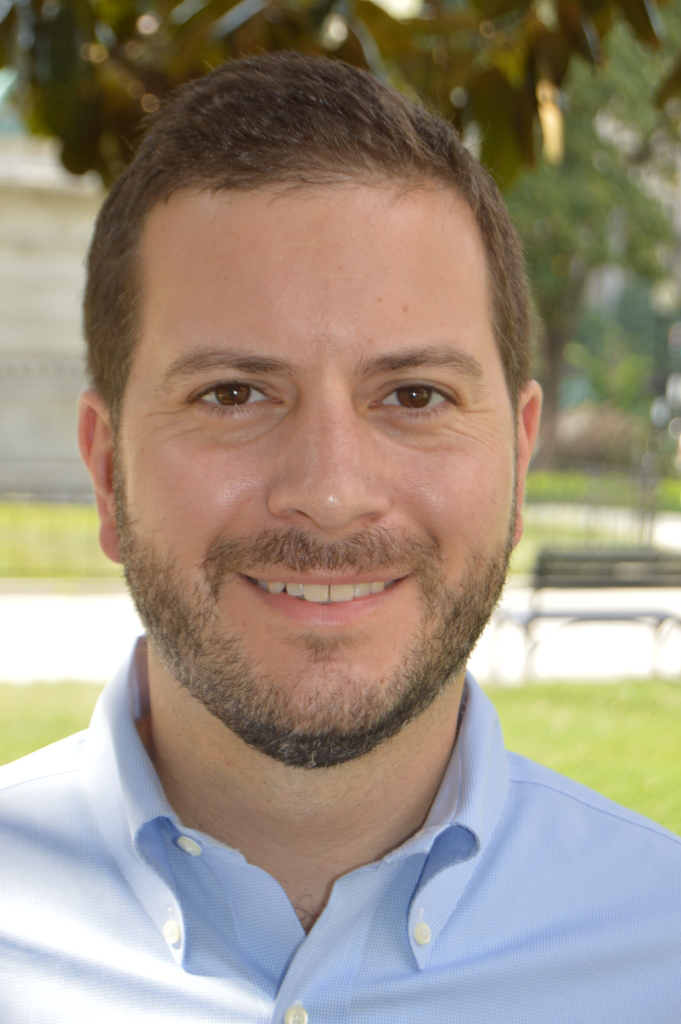
Adam Kron, lead counsel in the lawsuit, is a staff attorney for the Environmental Integrity Project. (Photo: courtesy of the Environmental Integrity Project)
CURWOOD: So the criticism from industry and perhaps some inside of the EPA itself is that you guys just want to shut down fracking, don't like fracking. The response?
KRON: No, we want it to be done right. Congress gave EPA the power to protect the public and to protect the environment and EPA's not doing that right now. If EPA actually comes up with those rules and industry finds it just can't meet them, that's on industry. That shows that it's not safe. But we think it can be done safely. We think that with proper rules the public can be protected properly.
CURWOOD: Now, of course, you can't sue the federal government directly, you have to file a notice of intent to sue the government. In theory, of course, they have 60 days to fix the defect. What would the response from EPA look like and how likely do you think that would be?
KRON: You know, we're pragmatists. We know that to get a rulemaking done takes a year or more. 60 days is not a lot of time, but we're hopeful that in that time EPA can come to the table and give us good indication that it plans to do something, that it has a commitment to what it saw fit to do back in 1988.
CURWOOD: Adam Kron is an attorney with the Environmental Integrity Project. Adam, thanks for taking the time with us today.
KRON: Great, thank you, Steve.
[We contacted EPA about the lawsuit and received the following response from Laura Allen, EPA Deputy Press Secretary: "EPA will review the Notice of Intent and any related information submitted to the agency."]
Related links:
- Environmental Groups Start Legal Process to Sue EPA over Fracking Waste
- Environmental Integrity Project press release on the lawsuit
- Deep Injection Wells: How Drilling Waste Is Disposed Underground
- USGS: About Induced Earthquakes
- EPA’s Resource Conservation and Recovery Act
- About Adam Kron
The Beef With Ground Beef
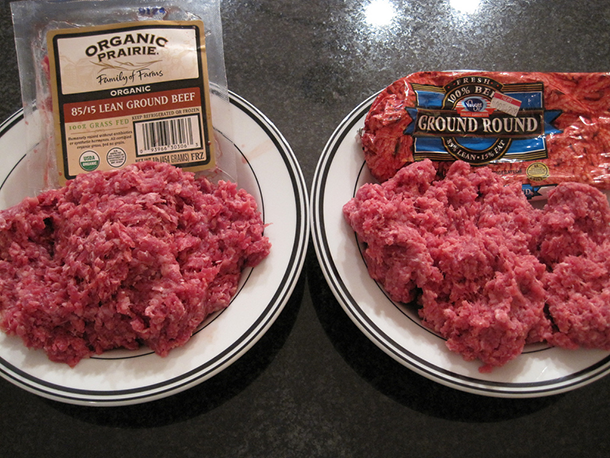
Consumer Reports’ investigation suggests that conventional ground beef may contain more bacteria than sustainably-sourced and produced ground beef. (Julie Magro, Flickr CC BY 2.0)
CURWOOD: Though it can be hard on the climate, Americans love ground beef: burgers, tacos, chili. With simple advertising slogans like “Beef, it’s what’s for dinner” and “Where’s the beef?” we hardly need to be sold on it. But new research by Consumers Union looked at the bacteria in our favorite ground meat, and the results may have us thinking twice before eating that medium-rare slider. Urvashi Rangan is the Director of Consumer Safety and Sustainability Group for Consumer Reports and she joined us on the line to discuss their study, which is published in the current issue of Consumer Reports.
RANGAN: We decided to take a look at raw ground beef out there - we've been looking at bacteria levels, looking at how resistance those bacteria are to various antibiotics and how many antibiotics. We also tried to segment our meat studies into what's conventionally produced versus what's more sustainably produced, and in this study we were able to draw some pretty significant differences between those two groups when it came to certain bacteria levels, as well as how likely those bacteria were to be resistant to multiple antibiotics.
CURWOOD: Now people talk of hamburger in the form of a quarter pounder, but your research was a quarter of a ton, I gather.
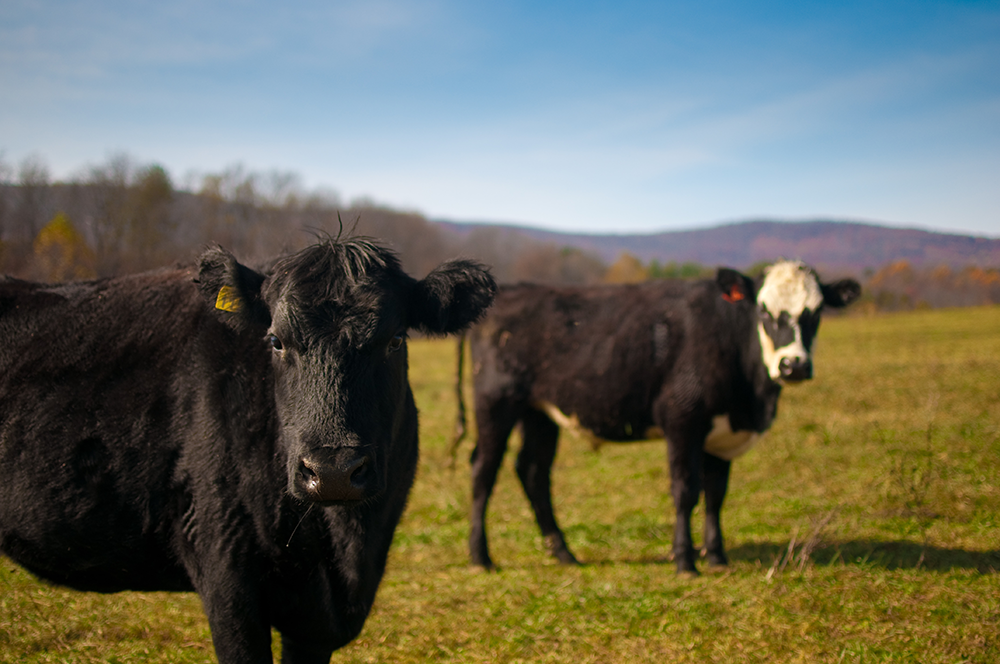
According to Consumer Reports’ investigation, sustainably-sourced beef in the U.S.is likely better for agriculture, consumers and the climate. (Photo: Brian Johnson & Dane Kantner, Flickr CC BY-SA 2.0)
RANGAN: That's right. We looked at about 485 pounds of ground beef around the nation. We shopped in about 26 different cities, 100 different stores over a three-week period and we then sent those off for testing for five different bacteria as well as our antibiotic resistance testing.
CURWOOD: So tell me about the bacteria that you were looking for?
RANGAN: We were looking for a variety of bacteria, some of which are indicators of filth and fecal contamination. We also looked at certain pathogens that are associated with beef illnesses and some other interesting organisms that aren't really being looked for right now on beef but definitely have a relation of food-borne illness like E. coli or Enterococcus and even Staphylococcus aureus. Just to dive in, we found about two percent salmonella on our conventional samples. We didn't find any on the sustainable samples. The rates for salmonella in ground beef are about one percent. It's also an organism related to a lot of outbreaks associated with beef.
CURWOOD: So how much Salmonella is too much?
RANGAN: Salmonella is actually one of those pathogens that is fairly potent. You don't need a lot of Salmonella to get sick, unlike the amount of toxin from Staphylococcus aureus you might need to be exposed to. On the other hand, E. coli 0157, you need very little to become sick and then there's really a lot of difference in terms of the illnesses themselves. They can all be quite serious, they can all lead to serious events. E. coli 0157, however, can have probably the most severe consequences. A lot more deaths are associated for the number of E. coli disease incidences we have.
CURWOOD: So how much E. coli did you find in your samples?
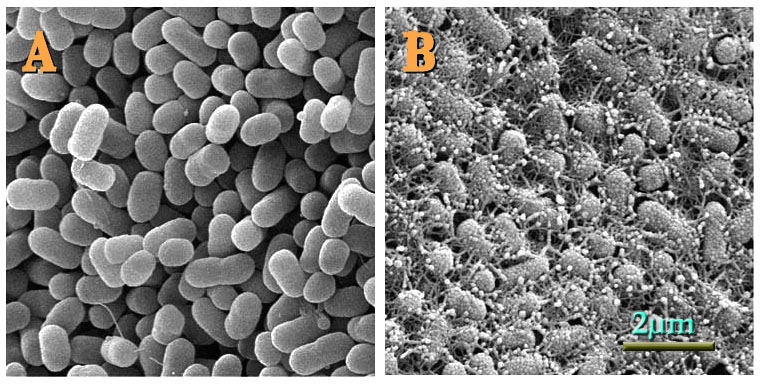
Various E. coli O157:H7 strains are known to cause severe food poisoning, which could lead to kidney failure and even death. Fortunately, none of this deadly strain was found during Consumer Reports’ investigation. (Photo: USDA, Flickr Public Domain)
RANGAN: I think the good news is that we didn't find any of the 0157s or the shiga toxin producing E. colis that we know are often associated with foodborne illness. Because those things only occur at about .5 percent in the beef supply, we didn't really expect to find any in 300 samples that we tested. But here's what we did find. When you're looking at E. coli you're also looking for the whole family of E. coli. We found a big difference between our conventional sample pool when it became general E. coli levels, about 60 percent in our conventional versus about 40 percent in our sustainable sample pool.
CURWOOD: Now, why might sustainably raised beef contain less, say, antibiotic resistant bacteria then conventionally produced beef?
RANGAN: All these pathogens really originate in manure and it's all about manure management then from the farm onto processing and everything else. So, 18 percent of the bacteria we found on conventional were resistant to three or more antibiotic classes that are important in treating human infections. When we compared that to the sustainable pool, only nine percent were resistant to three or more antibiotics, so about half the rate of the conventional pool. And then even more interesting when we pulled out grass-fed again, only six percent of the bacteria on the grass fed samples were resistant to three or more antibiotic classes. So big differences in those, and about 55 percent of conventional samples have Staphylococcus aureus. By contrast only 27 percent of our sustainable samples had Staphylococcus aureus. And that's really significant and it gets at some previous scientific studies. They think that because of the natural diet, because they're not fed grain, that can create an acidic environment in the stomach which is very conducive to E. coli formation, that grass fed animals actually shed less E. coli in their manure, and so these more sustainable systems can actually produce less E. coli even on the final product itself.
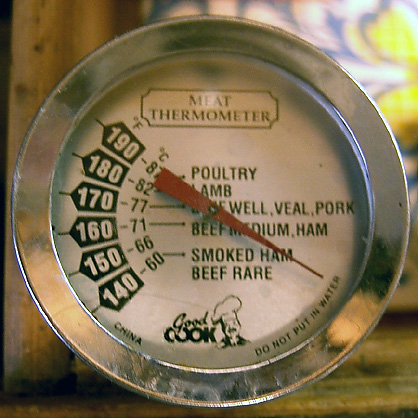
Safe food storage and cooking practices can drastically decrease your chances of contracting a food-borne illness.Beef should be cooked to at least 160 degrees Fahrenheit. (Photo: Bev Sykes, Flickr CC BY 2.0)
CURWOOD: But if the most sustainably produced grass raised beef still has a six percent chance of having antibiotic resistant bacteria on it, how prudent is it to eat ground beef at all?
RANGAN: All raw meat will have bacteria. It is the nature of it. I think for us it's about looking at illness rates that go on every year compared to what's out there on the market and seeing if there are differences in how to make the system safer and more sustainable production systems we already know are better for the environment, they’re better for the animals, and now in some ways we know it's actually producing safer meat and in fact more sustainable systems internalize the costs of environmental pollution. They make sure that that's not occurring. They manage manure and the most sustainable systems don't confine animals and so these more sustainably produced samples are trying to really address those root causes of why we use these antibiotics on a daily basis. The fact that you see some resistance and some of the sustainable samples may be related to how persistent resistance is in the environment. So this is really about stopping the practices that are making the situation much worse than it needs to be.
CURWOOD: Urvashi Rangan is Director of Consumer Reports Consumer Safety and Sustainability Group. Thanks for taking the time with us today.
RANGAN: Thanks a lot, Steve. I appreciate it.
Related links:
- Consumer Report’s Full Beef Report
- How Safe Is Your Ground Beef?
- About Urvashi Rangan, Ph.D
[MUSIC: The Beastie Boys, Lighten Up, Check Your Head, Capitol Records 1992]
CURWOOD: And there's more information including ways to cook and handle beef to avoid illness at our website, LOE.org.
Just ahead...the troubles with palm oil, and visions to fix them. Stay tuned to Living on Earth.
[CUTAWAY MUSIC: Jimmy Smith, Back at the Chicken Shack, The Incredible Jimmy Smith, Blue Note 2013]
Cheerios Go Green
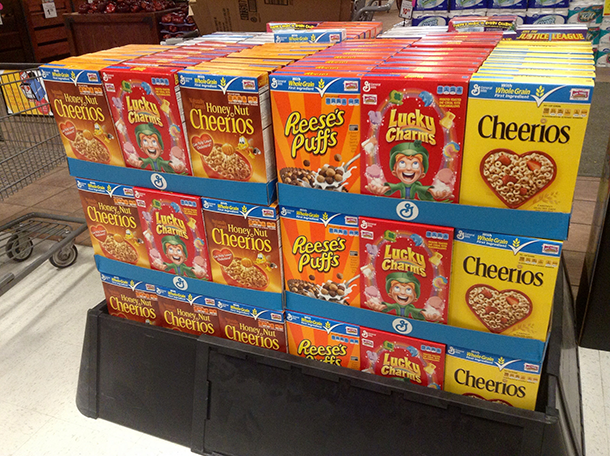
General Mills makes many different products; its cereals include Cheerios, Lucky Charms and Reese’s Puffs. (Photo: Mike Mozard, Flickr CC BY 2.0)
CURWOOD: It's Living on Earth. I'm Steve Curwood. With the clear evidence that global warming is advancing, more and more businesses are stepping up to reduce their climate changing emissions and adapt to the future. This week the spotlight is on General Mills, the $20 billion a year food giant with the famous brands of Cheerios, Betty Crocker, Haagen Dazs, Pillsbury and Yoplait. Now a diversified food company, General Mills got its start 150 years ago milling grain into flour along the upper Mississippi River in Minnesota. In recent years it’s converted its entire cereal line to whole grains, and is increasingly concerned about global warming because drought and other weather catastrophes are bad for the planet and business, says Jerry Lynch, Vice President and Chief Sustainability Officer.
LYNCH: As part of our efforts to conserve and protect the natural resources that we depend on as a business, we announced our commitment to reduce our absolute emissions by 28 percent versus our 2010 baseline across our full value chain from farm to fork to landfill by 2025. To get to sustainable emission levels based on the best scientific consensus by 2050, that would point to somewhere between a 50 and 70 percent reduction across our value chain.
CURWOOD: Tell me how you're going to implement this. I gather you're not just making changes, but you want the people who you do business with to make changes as well.
LYNCH: Yeah, we absolutely do, and we've had a fair amount of experience in our own supply chain. We've made absolute greenhouse gas reduction levels of 13 percent since 2005, but roughly only 15 percent of the greenhouse gas emissions occur inside our four walls. Two-thirds of our emissions are upstream of us in agriculture, and our value chain represents everything from farm to our production operations to our transportation to the way that products are retailed as well as to the way that consumers end up using the products of the end, and so we'll be partnering with the Field to Market Alliance for Sustainable Agriculture. You've got seed and input companies, grower groups like the Wheat Farmers of America, the corn growers; you've got aggregators like Cargill and Bunge, food companies like ourselves, Unilever, Kellogg's, Campbell's; retailers like Walmart, USDA; most of the major environmental organizations, in order for us to make a difference in where we need to be as a planet, we really have to address the full value chain for the sake of our business and the sake of consumers that consume our products.

General Mills logo (Photo: Public Domain)
CURWOOD: In terms of proportion, where do you emit the most greenhouse gases?
LYNCH: The largest areas are in dairy and in the row crops that we purchase to make our products, and those are all part of a commitment that we made to sustainably source those ingredients by 2020 several years ago.
CURWOOD: Let's say that I was in the business of growing oats to make your famous Cheerios. What kind of expectations might I receive from you in terms of how I grow those oats?
LYNCH: Really it’s about leading growers to innovation that's more sustainable and proving to them that more sustainable choices are more resilient and profitable choices. We have a group of oat growers engaged in this work. They measure their sustainability impacts across six different criteria right now including greenhouse gas emissions and soil carbon. And every year we help them look at the data and then provide to them stimulus and some of the best practices that we're seeing elsewhere that can lead to more sustainable and profitable choices. So it really is a matter of working with progressive farmers and farmers then tell each other about how this is making a difference in their own operations, and really leads the full community in that direction.
CURWOOD: So how do you reduce emissions from the production of milk?
LYNCH: If you look at the emissions associated with dairy, it's all about the cow, what the cow eats. So it's broken down into three big parts: one is the emissions that come in the production of the crops that the cows eat. And so, better use of fertilizers, better use of energy, building resilient soils that actually sequester carbon. You can do a good job of addressing the greenhouse gas emissions in that third. The Dairy Innovation center on the middle third has a great project about the cow of the future, to reduce their emission levels, weather it's through diets, through herd management, management of gestation cycles so that the cow is as healthy as possible. And the third piece of that is manure management on the back end, so to speak, and so the Dairy Innovation center along with the USDA has made a commitment to roll out several hundred bio-digesters that takes dairy waste and turns it back into energy and nutrients that can go back onto crops as well as bedding for the animals. The Dairy Innovation center has set a goal to reduce the greenhouse gas emissions on US fluid milk by 25 percent by 2020, and so bringing that into our own supply chain will make a big difference in addressing this goal.
CURWOOD: Why is addressing climate change an important issue for General Mills and why did your company decide to make such a strong commitment at this time to climate action?
LYNCH: Well it's one of the most pressing in environmental issues that we face. There's a number of risks that it presents to our livelihoods, and to our business, and to the shared planet if we don't address them. It plays a major role in the health of our ecosystems that support our consumers and our agriculture. Climate change is going to place stress particularly on some very vulnerable regions of the world that are important to us. If you look at West Africa, two countries produce 70 percent of the world’s cocoa, 90 percent of the worlds vanilla is purchased in Madagascar – we’re pretty dependent on that vanilla for Haagen Dazs - 80 percent of the world almonds come from California which is in a stretch of its worst drought ever. And so we think it's important to act because we got to manage the risk in our supply chain and because consumers and customers are increasingly asking us to be part of the solution.
CURWOOD: Jerry Lynch is the Vice President and Chief Sustainability Officer at General Mills. Thanks so much for taking the time today, Jerry.
LYNCH: My pleasure. Thanks for talking with me.
Related links:
- General Mills makes new commitment on climate change - See more at: http://blog.generalmills.com/2015/08/general-mills-makes-new-commitment-on-climate-change/?sf12644418=1#sthash.77gj9Ma7.dpuf
- General Mills' Press Release on Climate Change
- About Jerry Lynch, Vice President and Chief Sustainability Officer at General Mills
Rethinking Our Relationship to Palm Oil
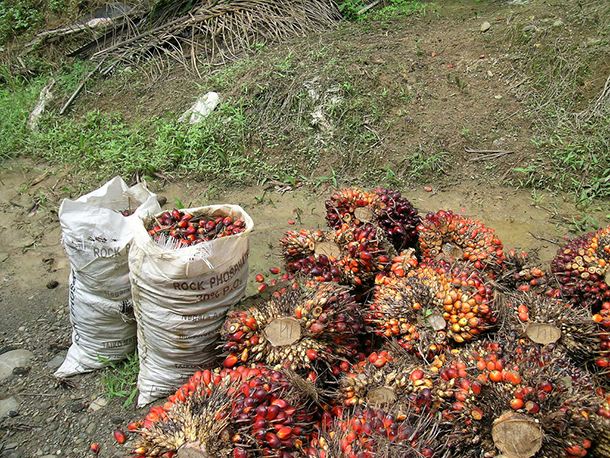
Palm oil is harvested from Elaeis guineensis, an oil palm tree native to Africa that is grown in Southeast Asia. The oil itself isn’t so bad—it has a much higher yield than other oilseed crops like rapeseed, coconut, and soya, so it requires less land to produce the same amount of oil. (Photo: Llan Pin Koh, Flickr CC BY 2.0)
CURWOOD: Now one of the ingredients General Mills plans to source sustainably is palm oil. You’ll find palm oil in many products – but it has an unsavory reputation as an environmental villain. For the sake of peanut butter and packaged cookies, palm oil extraction is pushing endangered species towards extinction and making a hefty contribution to the world’s carbon dioxide emissions. But while the situation can look bleak for dwindling rainforests and endangered wildlife, thanks to new developments, and new thinking, there may still be hope for reform. Living on Earth’s Shannon Kelleher has our story.
KELLEHER: If you head towards the processed foods next time you go to the grocery store, odds are you’ll end up adding a dash of controversy to your cart. Whether the label says “palmitate,” “palmitic acid,” or just plain old “palm oil,” it all comes from the clusters of brilliant orange fruit of a tree called Elaeis guineensis with a big behind-the-scenes presence in our daily lives.
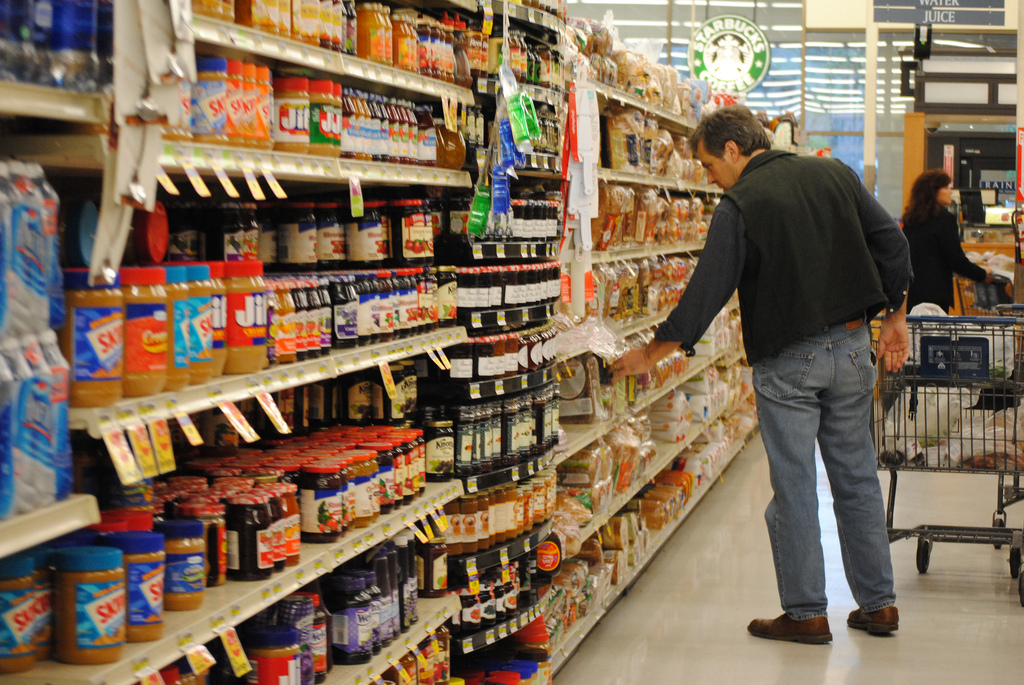
Between one third and one half of processed foods on supermarket shelves in the U.S. contain palm oil or an ingredient derived from it, including popular brands of peanut butter. It can be difficult to determine whether a product contains palm oil since it can go by many different names, including “palmitate” and “palmitic acid.” (Photo: Anthony Albright, Flickr CC BY-SA 2.0)
BOUCHER: It has been estimated if you go into a grocery store and look at all the products on the shelves that a third to a half of them will have some palm oil in it.
KELLEHER: That’s Doug Boucher, the Director of the Tropical Forest and Climate Initiative for the Union of Concerned Scientists. He says palm oil is so abundant on the consumer market because it’s cheap and versatile. It works as a preservative in processed foods and has chemical properties that help products lather and thicken.
BOUCHER: It’s a vegetable oil for cooking, frying for example, but also for baked goods of many kinds, various beverages, cosmetics, personal care products, soaps, shampoos…
KELLEHER: But before it comes anywhere near your grocery cart, about 85% of all palm oil is harvested from plantations in Malaysia and Indonesia. Between 1990 and 2010 an area of forest almost as big as 2 million football fields was cleared to make way for oil palms, helping drive endangered wildlife like orangutans and Sumatran tigers even closer to extinction. The clear-cutting continues today and Doug Boucher says that poses some uniquely sinister threats.
BOUCHER: Substantial areas of Southeast Asia have very carbon-rich soils, peat soils, with sometimes quite thick deposits of peat.
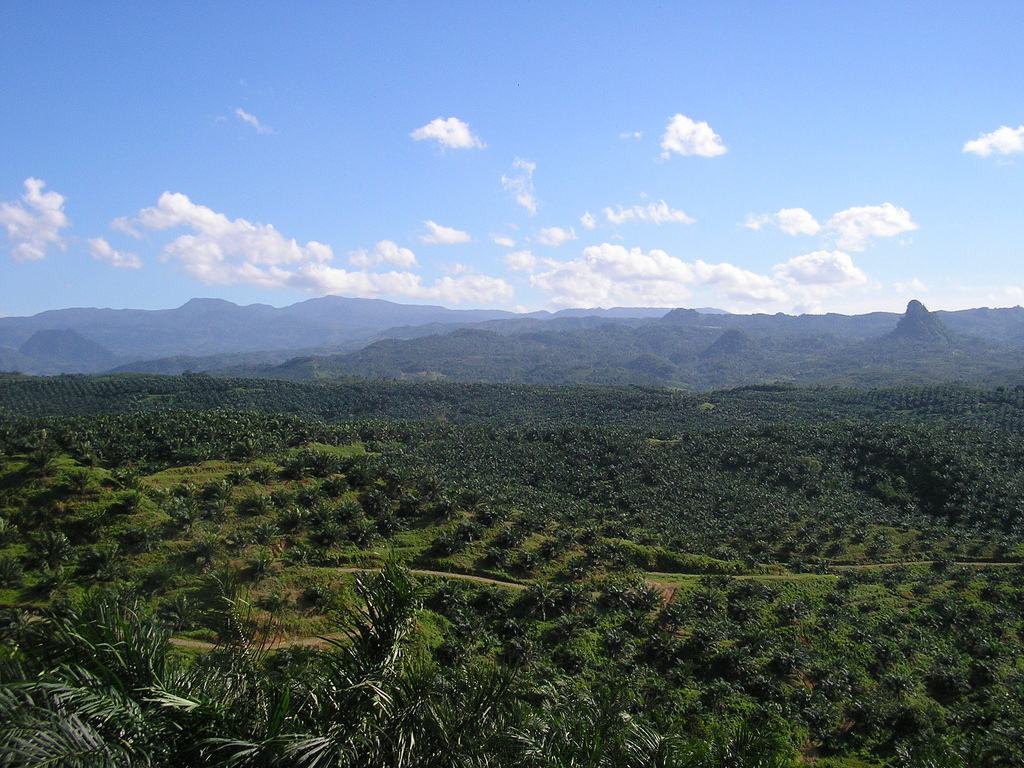
Between 1990 and 2010, the land equivalent of almost 2 million football fields was cleared to plant oil palm trees in Southeast Asia. By 2020, carbon emissions from burning forests are estimated to be over 558 million metric tons. (Photo: Achmad Rabin Taim, Wikimedia CC BY 2.0)
KELLEHER: As the peat is drained for oil palms, large amounts of carbon dioxide are released. And the peat can burn, releasing three to four times as much carbon as rainforest clear-cutting. These problems have caused some to seek out substitutes for palm oil.
JOHNSON: We use microalgae that grow in the dark.
KELLEHER: Jill Kauffman Johnson is the Global Sustainability Director for Solazyme, a company in California that uses microalgae to produce an oil for personal care products in very much the way other companies brew beer.
JOHNSON: We feed sugar, and the algae, and then put that all into a large fermentation tank. The algae then convert the sugar into oil, and it allows us to produce large amounts of oil in a matter of days.
KELLEHER: The technique is so productive that Solazyme has a contract to supply Unilever with 3 million gallons of algae oil for its soaps and other toiletries, as the multi-national company works to go greener and sustainably source all its raw agricultural materials in the next 5 years.
JOHNSON: We’re also finding in a recent study that we’ve had done that has been third-party reviewed, the greenhouse gas emission profile with the algae oil produced at our plant based in Brazil, where the sugar source is sugarcane, has a lower carbon footprint than that of palm oil and palm kernel oil.
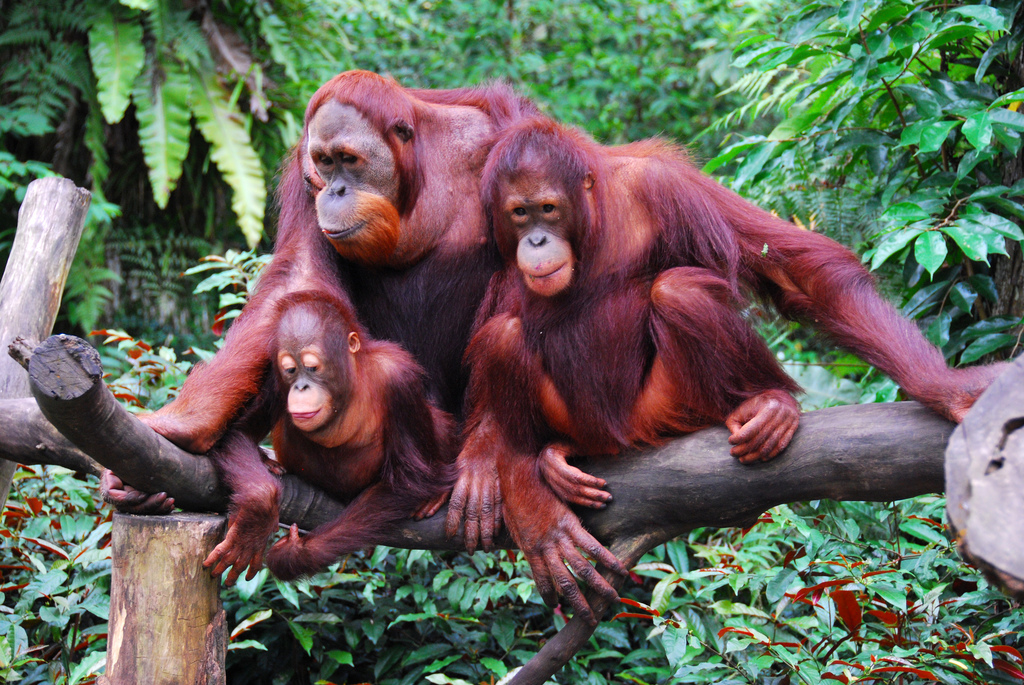
Clear-cutting for palm oil plantations has destroyed a substantial proportion of orangutan habitat, and this practice is pushing endangered orangutans to the brink of extinction. According to the World Wildlife Fund, scientists believe there are now less than 60,000 orangutans left in the forests of Borneo and Sumatra. (Photo: Robert Paul Young, Flickr CC BY 2.0)
KELLEHER: The study shows that algae oil production emits about half as much greenhouse gases as palm oil production, and requires seven times less water. Even if you account for growing the sugar cane, yields are about the same as palm oil—some 3 and a half tons per acre of land. But algae isn’t the only alternative. Scientists at the University of Bath in the UK are developing an oil from a type of yeast, which can be found almost anywhere and can grow on almost any feedstock. So given palm oil’s drawbacks and the potential alternatives, it might seem like we should just scrap the stuff altogether. But Doug Boucher of the Union of Concerned Scientists doesn’t think so.
BOUCHER: It’s not that the crop itself is intrinsically evil
KELLEHER: In fact, it has a considerably higher yield than other oilseed crops such as coconut, rapeseed, or soy. Plus, an oil palm is a tree—and there’s a benefit to that.
BOUCHER: It actually accumulates carbon dioxide from the atmosphere in the process of growing, and that’s different from most crops. So if you produce it in areas that are not forested but rather you use already-cleared land, you can actually have a positive benefit from it.
KELLEHER: In hopes of even more positive benefits from the crop and less destruction, the Roundtable on Sustainable Palm Oil, RSPO, was created in 2004. Palm oil producers can join the RSPO to have their product certified as “sustainable.” But Boucher says its regulations are voluntary, and far from perfect.
BOUCHER: That system doesn’t require them to stop deforesting, nor does it prevent them from clearing peat. It puts certain areas of forest off limits, which is better than nothing, but it doesn’t lead to no deforestation or no peat clearing.
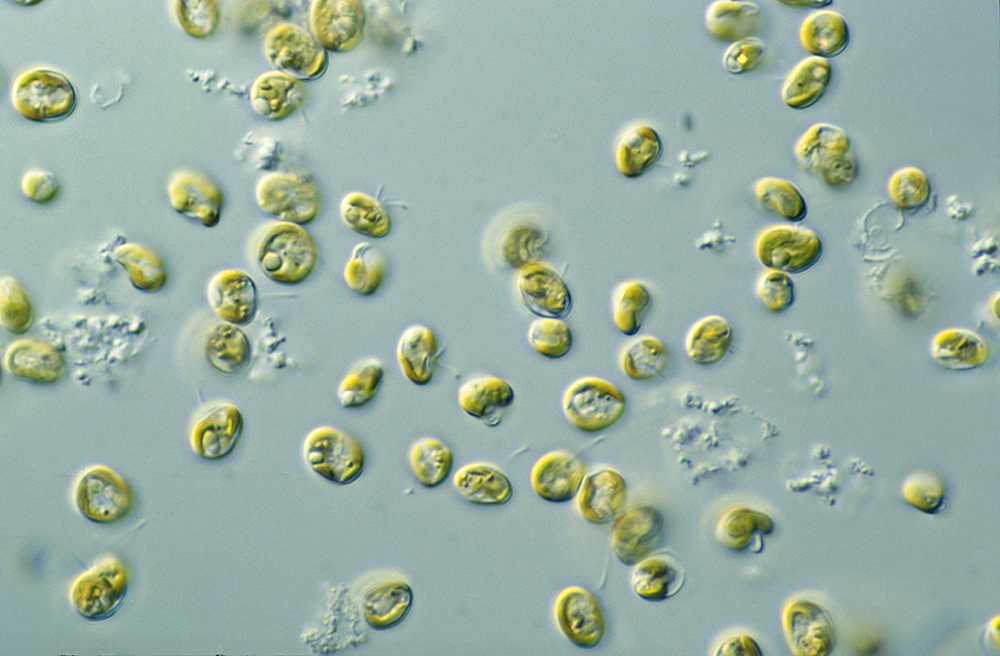
Solazyme, a company based in California, is using the fermentation abilities of microalgae to produce renewable oil similar to palm oil. It has a lower carbon footprint than palm oil and can be grown in fermentation tanks just about anywhere. (Photo: CSIRO, Wikimedia Commons CC BY 3.0)
Kelleher: The Union of Concerned Scientists is pushing for change too by urging companies to commit to zero deforestation, holding them to their promises, and enforcing transparency about where they source their palm oil.
BOUCHER: Right now, for example, we have a campaign in relation to Starbucks, which is one of the ones that, despite its generally green reputation, in fact hasn’t made a zero deforestation commitment. And we’re asking them to.
KELLEHER: While not everyone is there yet, consumer pressure appears to be helping accomplish what the RSPO hasn’t, with major companies like Kellogg, Colgate–Palmolive, and Proctor and Gamble making zero deforestation commitments within the last few years. It seems there’s real power in turning an industry’s eye to the image its consumers see.
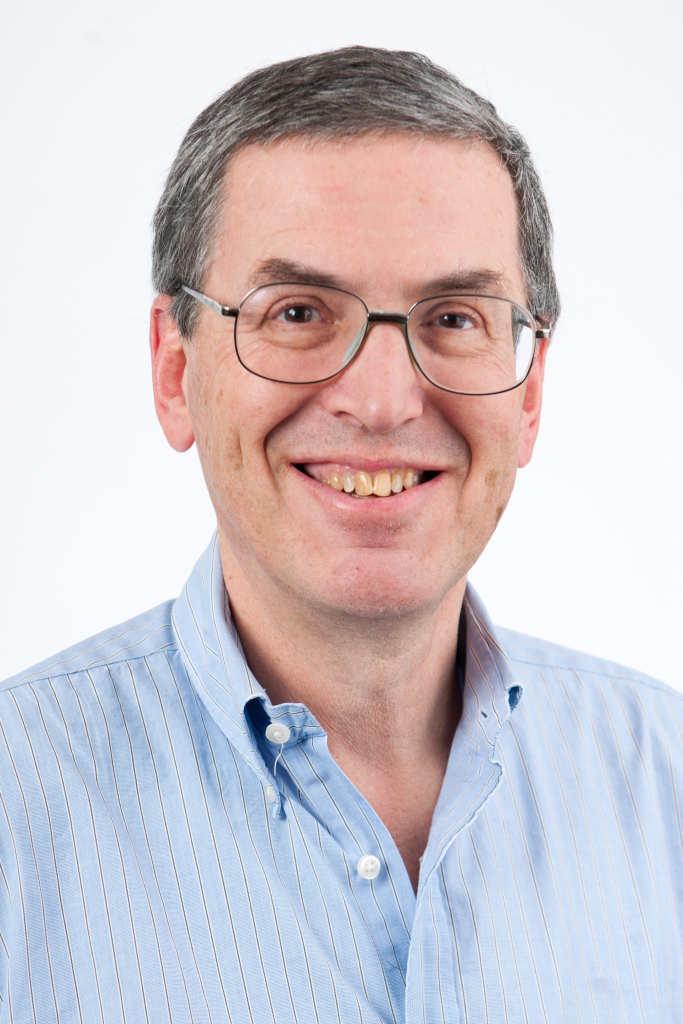
Doug Boucher is the Director of the Tropical Forest and Climate Initiative for the Union of Concerned Scientists. (Photo: Union of Concerned Scientists)
BOUCHER: You know, very often that when we hear something bad about a particular product, in this case palm oil, the initial thinking is ‘well I’ll just stop buying that entirely.’ And I understand that impulse, but in fact making companies produce that sustainably is actually better than simply giving up on it. It is better to worry about it because then you can actually get things changed.
KELLEHER: With more consumers thinking about the consequences of their purchases and more companies listening to consumer voices, maybe palm oil and sustainable living don’t have to be mutually exclusive. And Jill Kauffman Johnson from Solazyme doesn’t think we need to pick just one sustainable path, either.
JOHNSON: When we think about a global population predicted to reach 9 billion people in 2050, we will need to find all kinds of ways and all kinds of materials to produce enough food and clothing and shelter with less resources. And these solutions are actually going to come from a variety of sources.
KELLEHER: Ultimately, it might be a winning combination of sustainable solutions that helps endangered wildlife, saves our relationship with the environment and feeds the appetite of our growing world. For Living on Earth, I’m Shannon Kelleher.
Related links:
- NASA satellites show palm oil’s contribution to climate change
- The RSPO’s regulations are imperfect
- Union of Concerned Scientists calls upon companies to go deforestation-free
- Solazyme has developed an oil from microalgae
- The University of Bath is making a palm oil alternative from yeast
[MUSIC: The Police, Tea in the Sahara, Synchronicity, A&M 1983]
CURWOOD: Coming up...more than 60 years after malaria was eradicated in the US – tropical diseases are making a comeback. That's just ahead on Living on Earth. Stay tuned.
ANNOUNCER: Funding for Living on Earth comes from United Technologies, a provider to the aerospace and building systems industries worldwide. UTC Building & Industrial Systems, provides building technologies and supplies, container refrigeration systems that transport and preserve food, and medicine with brands such as Otis, Carrier, Chubb, Edwards and Kidde. This is PRI, Public Radio International.
[CUTAWAY MUSIC: Miles Davis, Green Haze, The Musings of Miles remastered, Concord Music Group, 2014]
"Tropical" Diseases Reappearing in the U.S.

The parasite Trypanosoma cruzi, which causes Chagas disease, can wreak havoc on heart muscle; consequently, Chagas disease is the leading cause of heart failure in Latin America. (Photo: Marc Perkins, CC BY-NC 2.0)
CURWOOD: It's Living on Earth. I'm Steve Curwood. Chagas disease, dengue fever, malaria...these are so-called “tropical” diseases, prevalent in Latin America, Asia and Africa. But cases of seemingly foreign infectious diseases in the American South are raising questions about the threat they can pose to public health. Joining us is Carrie Arnold, a science writer whose article on tropical diseases in the south recently appeared in the online magazine Mosaic. Carrie, welcome to Living on Earth.
ARNOLD: Thanks for having me.
CURWOOD: What diseases are we talking about here, and tell me why they're serious.
ARNOLD: So some of the diseases we're talking about are Chagas disease, which is spread by an insect known as the kissing bug. The kissing bug bites you and over time the Chagas parasite replicates in your body and especially in your heart muscle, and in about a third of cases the parasite eats away at your heart muscle over a period of decades, and so sometimes the only sign that you've been infected with Chagas disease is when you start entering heart failure.
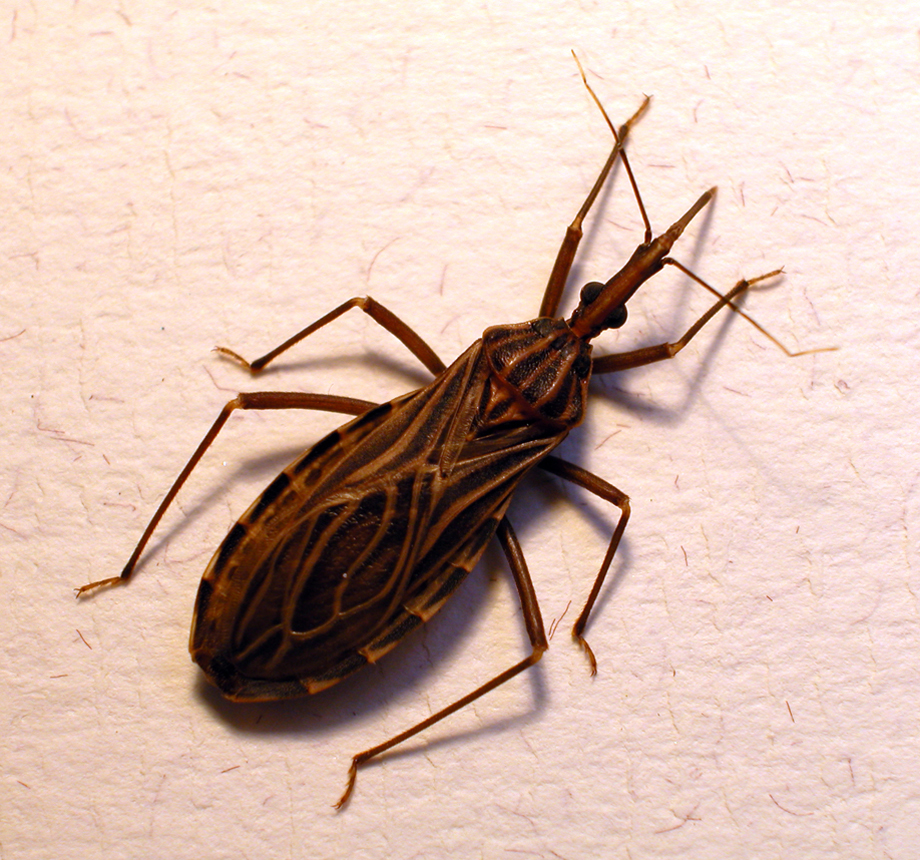
The “kissing bug,” so-called because it bites near the mouth while a person is sleeping, can carry Trypanosoma cruzi. This parasite can infect a human host when he or she scratches the bite. (Photo: Dr. Erwin Huebner, Wikimedia Commons)
CURWOOD: That's horrible.
ARNOLD: It's really scary. And another serious disease is Dengue, which has also been nicknamed "breakbone fever" because it causes such severe joint pain. It's typically transmitted by mosquitoes, and in a very small number of cases it can also cause hemorrhagic fever, abnormal bleeding, but that's fairly rare. Mostly people just have severe joint pain and are incapacitated for several weeks, and there's also neurocysticercosis, which is a worm, and it's typically associated with improper handling or cooking of pork, and in some cases it can infect the brain. The worm can live for about 10, 15, 20, 30 years and it typically doesn't cause symptoms until the worm dies and then the body realizes that it has this foreign entity in the brain and that's when it causes a lot of symptoms like headaches, nausea, dizziness and seizures.
CURWOOD: One of the most interesting points of your article is that the incidence of these diseases in the United States is quite a bit higher than what people think. Why is so little attention being paid to these diseases?
ARNOLD: I think the main reason is that they’re diseases of poverty, and the diseases that get a lot of attention are the ones that tend to make each your average watcher of CNN or MSNBC or Fox news scared. It's things like Ebola, but since these are diseases associated with poverty, they tend not to scare us as much. They don't cause these big disastrous outbreaks, they're just constantly lurking in the background. We've assumed that they are typically diseases of somewhere else, and we really have no idea that they're even here, let alone what kind of disease burden that they're causing.

Dengue fever is a viral disease transmitted by mosquitos. It can be fatal if symptoms are not treated. About half of the world’s population is at risk. (Photo: James Gathany, CC BY-NC-ND 2.0)
CURWOOD: So talk to me about why something like Chagas is concentrated in the community of poor people.
ARNOLD: For vector-borne diseases, diseases that are transmitted by insects, things like Chagas disease and Dengue, a lot of it is associated with housing quality. You know so you have to have money to have screens on your windows? Do you have money to make sure the screens don't have holes? Do you have money to have air conditioning and keep your windows closed? Do you have the money to repair cracks in the wall that might let insects in? Another factor is just things in the environment. Standing water... is your neighborhood prioritized for insect spraying? You know you have these so-called tropical diseases and you know they tend to be really chronic, they're not as acute like the flu where you get sick for a week and then you get better. They tend to persist for a really long time and they sap your ability to work and to think properly, and so it creates this vicious cycle of poverty.

The larvae of the pork tapeworm can cause cysts to develop in the brain, leading to neurocysticercosis. Symptoms include epilepsy, severe headaches, and blindness. (Photo: CDC, CC government work)
CURWOOD: What's the role of race in tropical disease rates here in the United States?
ARNOLD: I think race is mainly an issue due to its strong association with poverty, and it also I think plays into the fact of why these diseases are so ignored by policymakers, by legislators who fund research.
CURWOOD: What about immigration? Any relationship between that and this unnoticed uptick in these tropical diseases?
ARNOLD: It's certainly a factor. I think the movement of people whether through immigration or travel is definitely increasing, but as much as Chagas disease is seen in immigrants from Latin America, it's definitely a major problem in that population, there's also transmission occurring in the United States itself. So it would definitely be wrong to blame it on immigration and to say it's only a disease of immigrants.
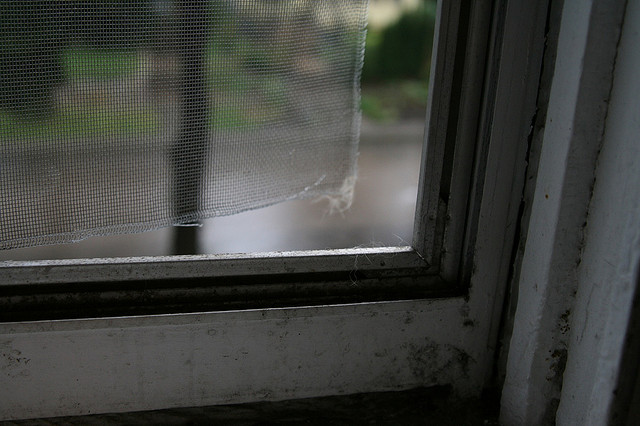
Chagas disease and dengue fever are correlated with poverty, in part because people lack the financial means to put physical barriers between themselves and disease-carrying vectors. The inability to fix broken window screens is one such problem. (Photo: Sharon Morrow, CC BY-NC-ND 2.0)
CURWOOD: In your article you say that research on tropical diseases in the American South petered out half-century ago. Why?
ARNOLD: Part of it was due to, I think, a global decrease in research in these diseases. By the 1960s, with a lot of the new antibiotics and the development of some new anti-parasitic medications, it was really generally thought that these diseases would become a thing of the past. And so researchers, scientists, physicians, were really discouraged from going into this area of research because it was seen as an area without a future. All too soon we learned that that thinking was really inaccurate, you know, infectious diseases are still a major problem and a lot of the methods used to diagnose these parasitic diseases are the same that were used in the 1950s and 60s; whereas if you look at diagnosing other diseases like the flu, I mean, you have rapid tests, you have DNA or RNA tests, with parasitic diseases you're still looking under a microscope and counting eggs.

Carrie Arnold is a freelance science writer who previously worked in the field of public health. (Photo: courtesy of Carrie Arnold)
CURWOOD: So we count on medical advances in this society - vaccines, special treatments - how likely is it that such advances can effectively thwart these tropical diseases that have emerged and reemerged in the south?
ARNOLD: I think there are a lot of advances in the pipeline. Part of the difficulty is that developing a vaccine against a parasite is a lot more complicated because their biology is a lot more complicated than a virus or a bacterium, and there isn't nearly the profits to be made in treating diseases like Chagas or neurocysticercosis as there is in treating diseases like influenza. That being said, there's been some really good public/private partnerships—efforts that have a combination of government funding nonprofit funding and even some smaller pharmaceutical funding--to develop these types of tests and vaccines.
CURWOOD: So how should we protect ourselves at risk of contracting these horrible tropical diseases here in the US?
ARNOLD: I think a lot of it needs to start with better research and better epidemiology. And another major factor is just working to decrease poverty. Decreasing poverty should for a lot of these diseases also help decrease transmission.
CURWOOD: Carrie Arnold is a freelance science writer working in the field of public health. Thanks for taking the time with us today.
ARNOLD: Thanks for having me I really appreciate it.
Related links:
- Arnold’s “Can America cope with a resurgence of tropical disease?”
- Chagas Disease
- Dengue Fever
- Neurocysticercosis
- About science writer Carrie Arnold
[MUSIC: Dirk Quinn Band, Thursday, Quintet, Dirk Quinn Band, 2008]
Beyond the Headlines
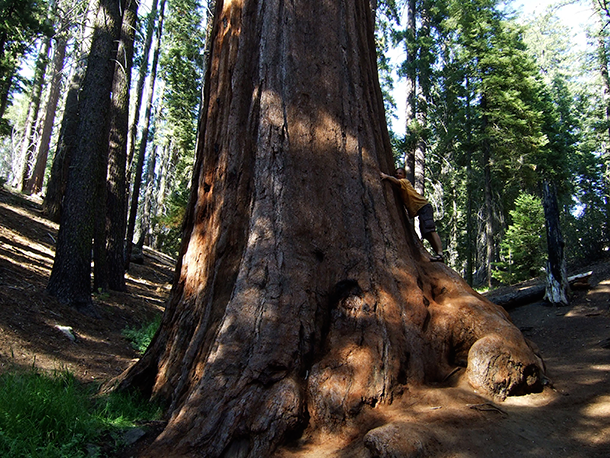
The term “treehugger” gets thrown around a lot, but its history actually dates back to 18th century India. (Photo: Sebastian Werner, Flickr CC by 2.0)
CURWOOD: Time to head off to the world beyond the headlines now. Peter Dykstra is our guide. He’s with Environmental Health News, that’s EHN.org and DailyClimate.org, and joins us on the line from Conyers, Georgia. Hi, there, Peter.
DYKSTRA: Hi, Steve. Let me bring you a couple of items about climate denial: One involves a tenacious journalist, the other one, a science website. Y’know we’ve spoken a lot about how the U.S. coal industry is having the worst of financial times. Last month a coal giant, Alpha Natural Resources, filed for Chapter Eleven bankruptcy, and when you do that, there’s a lot of paperwork. An investigative reporter named Lee Fang, at the online publication The Intercept, dug through that bankruptcy filing and you’ll never guess what he found.
CURWOOD: Do tell.
DYKSTRA: In a Chapter Eleven filing, you have to disclose all the people and businesses you have financial ties with, and Alpha was apparently doing business with a fella named Chris Horner. He’s a Washington political operative and attorney and a staunch climate denier who’s gained fame for himself by hounding climate scientists with massive Freedom of Information Act requests and calls for investigations of their research. Another name on Alpha’s financial list is the law firm where Horner is a Senior Attorney. Neither Horner nor Alpha are commenting, and the bankruptcy papers don’t go into detail on how much money changes hands, but many climate scientists are enjoying the revelation of something they’ve long suspected – their serial harasser is at least partially powered by coal.
CURWOOD: Hmm. Fossil-fueled FOIA’s. Let’s move on to that science website you mentioned.
DYKSTRA: So Barack Obama is the first U.S. president to set foot on the soggy permafrost and shaky ice of the Arctic while in office. And we’re at the time of year when the Arctic always gets a little extra attention for climate change anyway. September 15th is the traditional date when ice cover in the Arctic Ocean reaches its lowest levels before the winter-freeze sets in.
CURWOOD: And I guess this year continues the overall trend of declining sea ice.
DYKSTRA: It does. And while some years are not as bad as others, the trend is undeniable. Which of course does not stop some people from denying it, so if your uncle, or your neighbor, or your local member of the House Science Committee says the Arctic’s not melting, take them to the website called Cryosphere Today. It’s run by the Arctic program at the University of Illinois, and they have an image of Arctic ice coverage for every day back to 1979 and they lay them out in before-and-after mode. So if you want to compare the amount of Arctic ice in September 1979 to this September, here you go. Tell ’em how to find that website, Steve Curwood!
CURWOOD: So, you can link to those before and after ice images, or see a recent one, at LOE.org – and by the way that’s where you can find out more about these stories. And, Peter, before you go, let’s get a lesson in environmental history. What have you got?
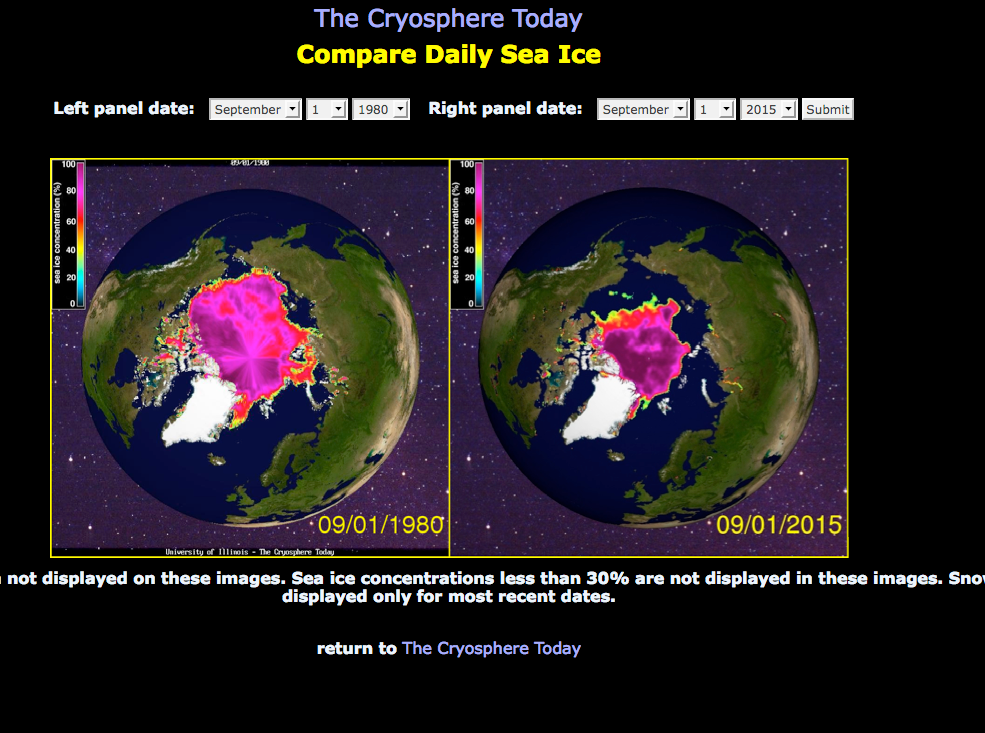
The website Cryosphere Today shows arctic sea ice levels going back decades (Photo: Cryosphere Today)
DYKSTRA: Ever wonder how we got the word “treehugger”? It’s one of those names whose meaning varies, depending on who’s using it. If you think there’s too much environmental regulation, it’s an insult. If you work to save forests, it’s high praise, and for most of the rest of the world, “treehugger” is kind of a dismissive stereotype. But September 9, 1730, is the date that historians record the first inter-species hug between humans and trees.
CURWOOD: Tell us more. And keep it clean, please.
DYKSTRA: 285 years ago, in what’s now the Indian state of Rajasthan – which literally means the “Land of Kings,” a sect called the Bishnois were nature worshippers who literally became treehuggers, and it didn’t go well. As the story goes, one of those kings – a rajah – sent soldiers to cut down Khejarli trees to help build a new palace. But the trees were sacred to the Bishnois. Amrita Devi, a Bishnoi woman, stepped forward to stop the soldiers, wrapped her arms around a tree and said they’d have to kill her to get at the tree.
CURWOOD: And they did?
DYKSTRA: I’m afraid so and they didn’t stop there. Amrita’s three daughters stepped forward to save the trees, and it didn’t stop there either. In all, 363 Bishnois gave their lives by hugging trees. So next time you toss around the word “treehugger,” remember that it has deep, noble, and very tragic roots.
CURWOOD: What a price for environmental protection. Peter Dykstra is with Environmental Health news – that’s EHN.org, and the DailyClimate.org. Talk to you next time, thanks.
DYKSTRA: All right, Steve, talk to you soon.
Related links:
- Lee Fang’s story “Attorney Hounding Climate Scientists Covertly Funded By Coal Industry”
- Cryosphere Today
- More about the history of “treehuggers”
[MUSIC: Kris Bower, Wake the Neighbors, Heroes and Misfits, Concord Music Group 2014]
The Place Where You Live: Cowee, North Carolina
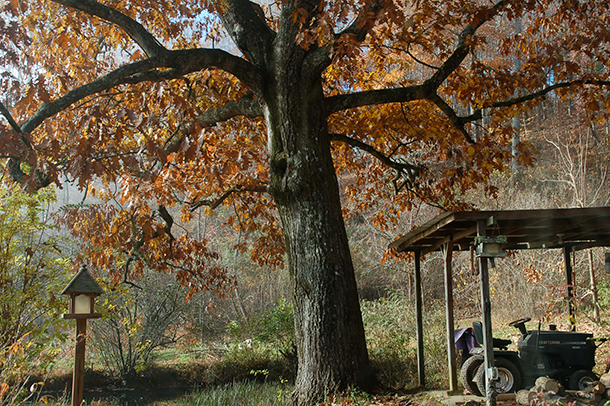
The great oak alongside a deceased mower. (Photo: courtesy of Angela-Faye Martin)
CURWOOD: We head off to the Great Smoky Mountains in North Carolina now, for another installment in the occasional Living on Earth/Orion Magazine series “The Place Where You Live.” Orion invites readers to put their homes on the map and submit essays to the magazine’s website, and now we’re giving them a voice.
[MUSIC: Edward Sharpe and The Magnetic Zeroes “Home” from Edward Sharpe and The Magnetic Zeroes (Rough Trade Records 2009)]
CURWOOD: The North Carolina landscape captured in today’s essay is also the inspiration for the songs our essayist created and performs.
[ACOUSTIC GUITAR MUSIC by Angela Faye Martin]
FAYE-MARTIN: I'm Angela-Faye Martin and I live in the Cowee community of Nathan County, North Carolina.
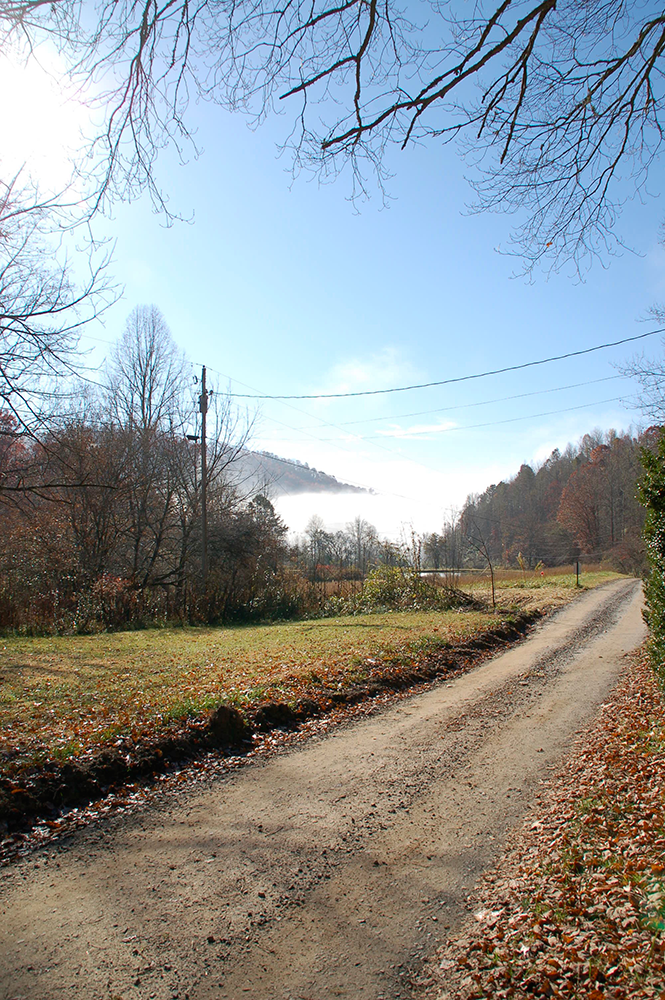
The view from the road in front of Angela-Faye Martin’s house. (Photo: courtesy of Angela-Faye Martin)
[SINGS]
I'm about 20 miles due south of the Great Smoky Mountains National Park.
[CRICKETS]
I live on this gravel circle. It's kind of a horseshoe shaped lane that goes up a cove and back down a cove again, sort of like a hairpin. At the top of the cove, there's a waterfall. But to give you some perspective on the demographics, I'm 45 and I'm vastly the youngest person on our circle. It's just fairly bland as far as human diversity goes, which is fairly stark in the face of how biologically diverse the place is. I'm kind of living between two worlds, and this essay captures how it feels to be immersed and communing with the nature around me, and the dichotomy of being a human and the difficulty of communing with humans, and being nimble enough to being able to go between those two words, and how humans seem to be more of an asteroid than a fellow mammal in the scene. This is my essay about Cowee, North Carolina.
FAYE-MARTIN: On clear days there's a Carolina-blue set against reds and burnished pumpkin-hued tree fringes, looking like a graphic for a religious tract or benefit supper. But I prefer the foreboding of a pewter sky looming above my southern Appalachia. There is a sharp loneliness in these coves, until you start your phenology log. You obsess over occurrences. If you’re a songwriter, this informs your writing, but decreases your interest in humans. Good luck convincing dinner guests that you are paying attention and not looking out the window to see if Leonard, the big-beaked juve[nile] cardinal, is on the feeder.
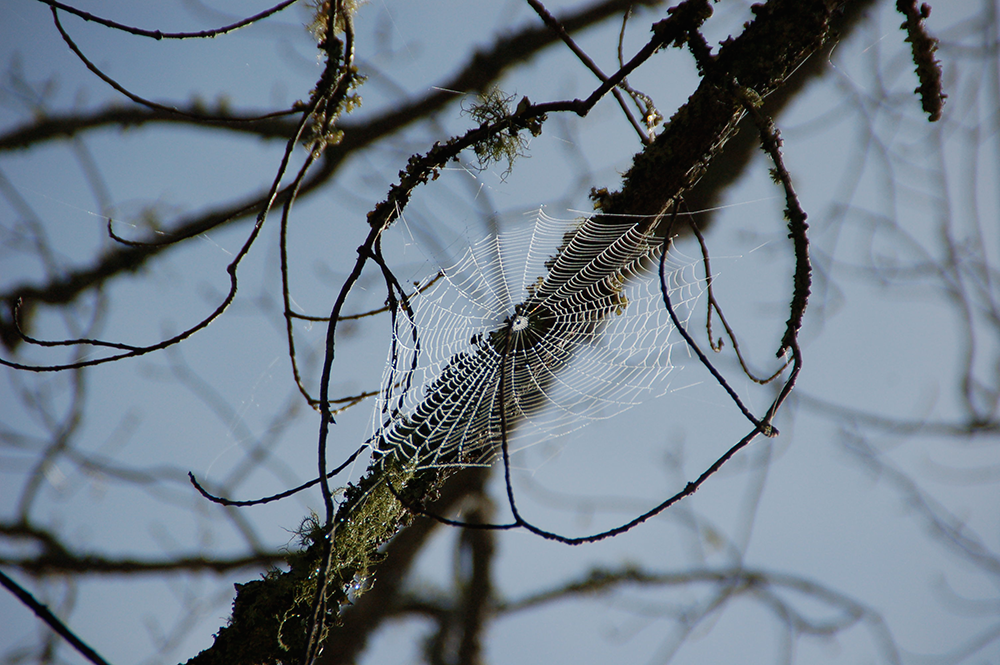
Spider web in a black walnut tree. (Photo: courtesy of Angela-Faye Martin)
The tribes of nuthatches and chickadees festooning the limbs hugging our 120 year-old home are oblivious to the notion I must travel to the closest city, over an hour away, to participate in the doings of my own species. City mice friends bought me a ticket to the latest Nick Cave film and after, we talk about my waning garden and their taming of alley cats. And despite having to huff my inhaler, I wonder why I live so far out in the country.
There are manifold reasons for the relief and safety I sense in this place. It has me under its spell. It states to me that there are yet to be defined mythos and codes within the land, and that ‘woad’, the foggiest and most mystical of blues, rhymes with ‘cold’. And why not dedicate the rest of my days to watching the ravens, or learning the names of the 460 spider species that I call neighbors?
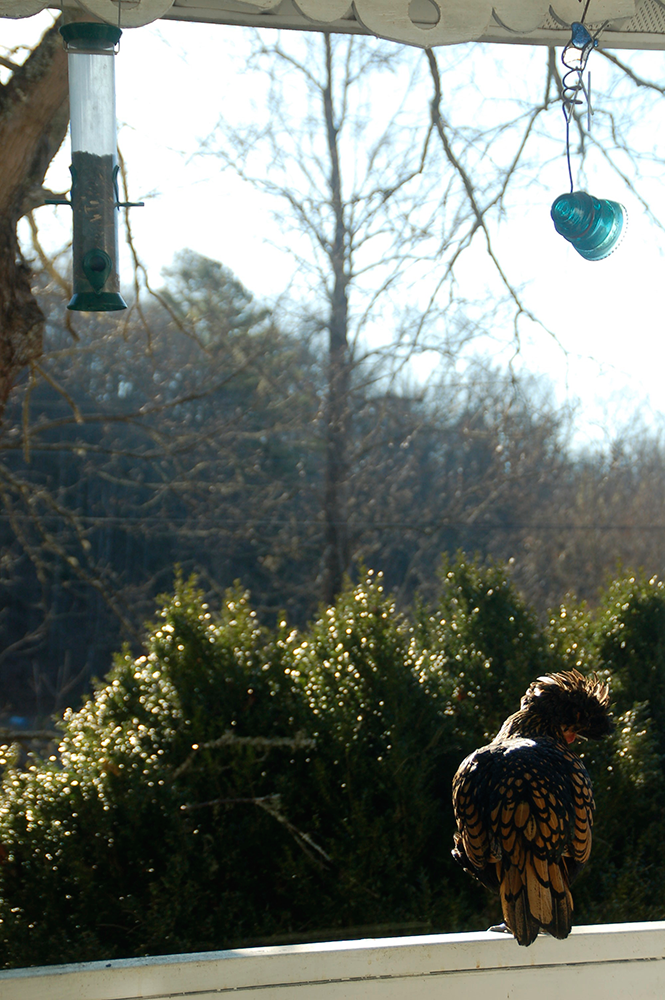
Angela-Faye Martin’s late chicken “Poli” on her porch. (Photo: courtesy of Angela-Faye Martin)
But today, I’m thinking how not to draw people here because too often they are not here for the beauty, the fertility of the soil, or even their families, but for a lack of human diversity. And I'm reminded the most dangerous thing in these unglaciated ancient slopes are bipeds. Now I wonder, who is baiting deer in the meadow on the mountain above our home? I look around, fix to pee on the corn strewn beneath the deer stand, and the Great blue lobelia nods to me. I place a frond on the poacher’s seat.
[GUITAR MUSIC]
CURWOOD: The voice and guitar of Angela Faye Martin. You can tell us about the place where you live if you like -- there’s more about Orion Magazine and how to submit your essay at our website, LOE.org.
Related links:
- Angel-Faye Martin’s essay
- Orion magazine
- Angela-Faye Martin’s website
- Previous Place Where You Live Essay’s on Living on Earth
[MUSIC: Omar Sosa, Walking Together, Calma, OTA Recordings, 2011]
CURWOOD: Living on Earth is produced by the World Media Foundation and brought to you from the campus of the University of Massachusetts Boston, in association with its School for the Environment, developing the next generation of environmental leaders. Our crew includes Naomi Arenberg, Bobby Bascomb, Emmett Fitzgerald, Lauren Hinkel, Helen Palmer, Adelaide Chen, Jenni Doering, John Duff, and Jennifer Marquis. Tom Tiger engineered our show, with help from Jake Rego, Noel Flatt and John Jessoe. Alison Lirish Dean composed our themes. You can find us anytime at LOE.org, and like us, please, on our Facebook page - it’s PRI’s Living on Earth. And we tweet from @LivingOnEarth. I'm Steve Curwood. Thanks for listening.
ANNOUNCER1: Funding for Living On Earth comes from the Grantham Foundation for the protection of the environment, supporting strategic communication and collaboration in solving the world’s most pressing environmental problems. The Kendeda Fund, furthering the values that contribute to a healthy planet, and Gilman Ordway for coverage of conservation and environmental change. Living on Earth is also supported by Stonyfield Farm, makers of organic yogurt, smoothies and more; www.stonyfield.com.
ANNOUNCER2: PRI. Public Radio International.
Living on Earth wants to hear from you!
Living on Earth
62 Calef Highway, Suite 212
Lee, NH 03861
Telephone: 617-287-4121
E-mail: comments@loe.org
Newsletter [Click here]
Donate to Living on Earth!
Living on Earth is an independent media program and relies entirely on contributions from listeners and institutions supporting public service. Please donate now to preserve an independent environmental voice.
NewsletterLiving on Earth offers a weekly delivery of the show's rundown to your mailbox. Sign up for our newsletter today!
 Sailors For The Sea: Be the change you want to sea.
Sailors For The Sea: Be the change you want to sea.
 The Grantham Foundation for the Protection of the Environment: Committed to protecting and improving the health of the global environment.
The Grantham Foundation for the Protection of the Environment: Committed to protecting and improving the health of the global environment.
 Contribute to Living on Earth and receive, as our gift to you, an archival print of one of Mark Seth Lender's extraordinary wildlife photographs. Follow the link to see Mark's current collection of photographs.
Contribute to Living on Earth and receive, as our gift to you, an archival print of one of Mark Seth Lender's extraordinary wildlife photographs. Follow the link to see Mark's current collection of photographs.
 Buy a signed copy of Mark Seth Lender's book Smeagull the Seagull & support Living on Earth
Buy a signed copy of Mark Seth Lender's book Smeagull the Seagull & support Living on Earth

